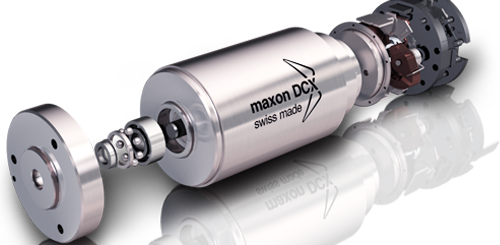Spool Transmission & Motor Selection
This week, the team met with Jonathan Fiene to talk about forms of actuation and issues implementing a cable drive system. In particular, we were trying to solve the problem of varying rates of bicep and tricep extension. A novel solution our team developed was to use a 1:1 spool system – one mounted on the motor, and one of the elbow joint. This solves our rate-variation problem, though the exact sizes of the spools must be solved out based on the motor selection. Check out the image below.

The motor selection was narrowed to Maxon’s line of DCX motors with a custom combination of motor, gearbox, and encoder. Consultation with a Maxon representative will be crucial in finalizing the motor order.

